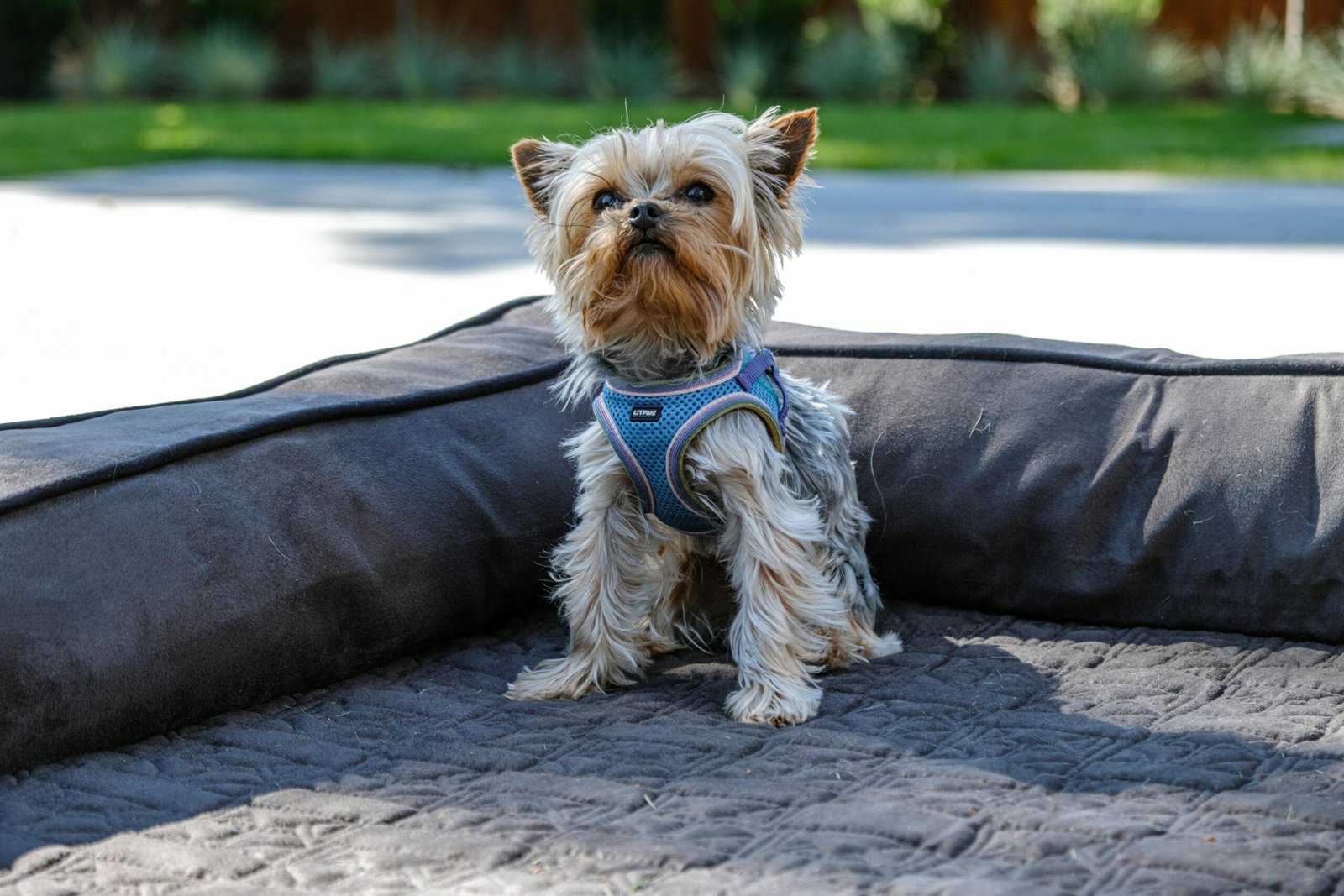The Ultimate Guide to Labradoodle Training: Tips for Raising an Obedient Dog
Introduction
Labradoodle Training is crucial for building a strong bond and ensuring they become well-mannered companions. Labradoodles, known for their intelligence and friendly nature, respond exceptionally well to training.
In this guide, we’ll explore effective Labradoodle training techniques, when to start, essential commands, and more. Let’s get started on your journey to Labradoodle training!
Understanding Labradoodle Behavior
Before diving into Labradoodle training methods, it’s essential to understand the Labradoodle temperament. These dogs are friendly, energetic, and intelligent, which makes them eager to please their owners. Their strong desire to engage with people means that positive reinforcement is the most effective training method.
When you reward good behavior with treats, praise, or playtime, your Labradoodle is more likely to repeat that behavior.
Labradoodles also have a natural curiosity, so it’s important to keep training sessions engaging and stimulating. Due to their Poodle lineage, they can be independent thinkers, so balancing guidance with patience is key. Keep sessions short and positive to maintain their interest.
With consistent effort, Labradoodles often exceed expectations and show incredible adaptability in various environments, including homes with children or other pets.
When to Start Labradoodle Training
Labradoodle training should begin as early as possible. Starting at around 8 weeks old allows you to instill good habits from the start. Early socialization is crucial, so expose your puppy to various environments, people, and other pets to help them become well-adjusted adults.
In Labradoodle training, consistency is essential, so create a schedule. Use the same commands and reward system to help your Labradoodle learn faster. Remember, patience is essential. Your puppy may not understand commands immediately, but with time and practice, they will catch on.
For older Labradoodles or rescues, you can still begin training with a focus on gentle reinforcement. Since older dogs may have developed certain habits, it’s important to approach training with a bit more patience. Start with foundational behaviors like sit, stay, and recall, before moving on to more complex tasks. Don’t worry if progress seems slow at first — even adult Labradoodles can excel with consistent guidance.
Basic Commands Every Labradoodle Should Know
Teaching your Labradoodle basic commands is foundational to their training. To get you started, consider these crucial commands:
Sit: Hold a treat close to your Labradoodle’s nose and move it upward. As their head follows the treat, their bottom will lower to the ground. When they are sitting, say “sit” and reward them.
Stay: When your dog sits, open your hand in front of him and say “stay.” Step back a little bit. If they stay, return and reward them. Gradually increase the distance.
Come: Use a leash in a quiet area. Say your dog’s name followed by “come.” When they approach you, reward them. To reinforce the order, practise this in different settings.
Down: Have your dog sit at first. Hold a treat close to the ground and move it away from their nose. Say “down” and give them a reward when they follow the treat all the way down.
These commands are the basics, but consistency is crucial. You should aim for short training sessions spread throughout the day, especially for puppies, whose attention spans can be limited.
Repetition is key: Over time, you can start introducing more distractions (like training in busier environments) to make sure your Labradoodle obeys commands in various situations. This will help establish strong behavior, even outside of the home.
Potty Training Your Labradoodle
Potty training is one of the first challenges new Labradoodle owners face. Crate training is an effective method, dogs naturally avoid soiling their sleeping area. Start by introducing your Labradoodle to their crate. Take them out frequently, especially after eating or waking up, and reward them when they go outside.
Consistency is vital, establish a schedule for bathroom breaks and be patient. Accidents will happen, but scolding won’t help. Instead, redirect them to the appropriate spot and reward them when they get it right.
In addition to crate labradoodle training, establishing a clear outdoor area for bathroom use can be helpful. If possible, take your Labradoodle to the same spot each time, as the scent will encourage them to go there. Consider incorporating a verbal cue, like “go potty,” so they associate the phrase with the action over time. With diligence, your Labradoodle will soon understand the routine.
Leash Training and Walking Etiquette
Labradoodles are energetic dogs that need regular exercise. Teaching your Labradoodle proper leash etiquette is essential for enjoyable walks. Start with a comfortable harness and leash.
To prevent pulling, stop walking whenever your dog pulls ahead. Wait until they return to your side, then resume walking. This teaches them that they can only move forward when they are walking nicely beside you. Reward them for good behavior along the way.
It’s also important to teach your Labradoodle how to properly react to distractions during walks, such as other dogs, cyclists, or cars. Use treats to maintain their focus on you, and practice in areas with moderate distractions before moving to busier environments. Consistent leash training will not only make walks more pleasant but will also ensure your dog’s safety in public spaces.
Advanced Training: Tricks and Agility
Once your Labradoodle has mastered basic commands, you can introduce fun tricks and agility training. Teaching tricks like “high-five” or “roll over” can be a great way to bond with your dog while providing mental stimulation.
For agility training, consider setting up an obstacle course in your yard. Use simple items like cones, tunnels, or jumps to encourage your Labradoodle to navigate through them. This activity keeps them engaged and helps build confidence.
Advanced training, such as agility or obedience competitions, can provide an excellent outlet for your Labradoodle’s energy. Consider enrolling in an agility class or practicing with equipment like weave poles and A-frames at home.
Not only will this keep them physically fit, but it will also challenge their sharp intellect, preventing boredom and associated behavioral issues like excessive barking or chewing.
Common Training Mistakes to Avoid
While Labradoodle training, avoid these common mistakes:
Over-reliance on punishment: Positive reinforcement is more effective than punishment. Focus on rewarding good behavior rather than scolding for mistakes.
Inconsistency: Be consistent with commands and training sessions. Mixed signals can confuse your Labradoodle.
Starting too late: The earlier you begin training, the better. Waiting too long can lead to ingrained bad habits.
Another common mistake is expecting too much too soon. Labradoodles, particularly puppies, need time to understand what you’re asking of them. Being too harsh or losing patience can slow down progress. Always reward small steps in the right direction to keep your Labradoodle motivated and eager to learn.
Training a Labradoodle with Specific Challenges
If you adopt an older Labradoodle or encounter specific challenges, patience is vital. Older dogs may have established behaviors, so start with basic commands and gradually introduce new ones.
For Labradoodles showing signs of anxiety or stubbornness, consider consulting a professional trainer who can provide tailored strategies for your dog’s unique needs.
Labradoodles may occasionally display stubbornness, especially if they feel bored or under-stimulated. In such cases, increasing physical and mental exercise often helps. Interactive toys, puzzle games, and regular playtime can go a long way in keeping their mind sharp and their training on track.
Conclusion
Labradoodle training is an enriching experience that fosters a strong bond between you and your furry friend. Remember to start early, use positive reinforcement, and remain patient throughout the process. Your efforts will pay off as you enjoy the companionship of a well-trained Labradoodle.
Have you started your Labradoodle training? Share your tips in the comments below, and don’t forget to check out our other posts on Labradoodle grooming and care!
Reference











